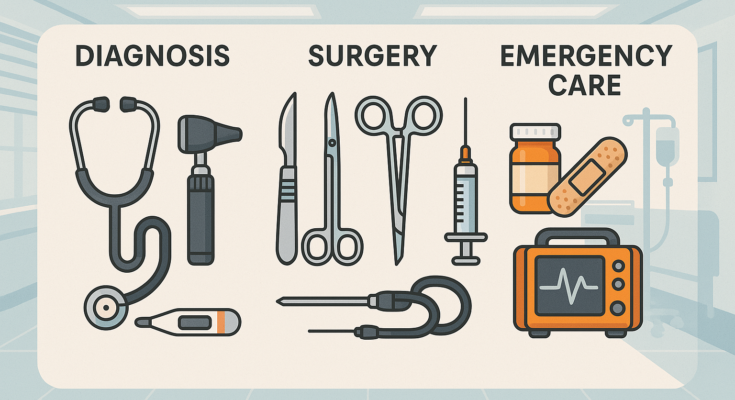Exploring the World of Medical Equipment: Tools That Save Lives
Medical equipment is the unsung hero of healthcare, quietly powering diagnoses, treatments, and recovery across every specialty. From emergency rooms to dental clinics, these tools are as diverse as the professionals who use them. Let’s dive into the essential categories that keep modern medicine running—and discover how each plays a vital role in patient care.
1. Diagnostic Tools: The First Line of Insight
Every medical journey begins with assessment. The iconic stethoscope remains a timeless symbol of diagnosis, allowing doctors to listen to heartbeats and lung sounds. Alongside it, blood pressure cuffs, thermometers, and pulse oximeters (those fingertip clips measuring oxygen levels) form the frontline toolkit. For deeper investigation, otoscopes peer into ears, ophthalmoscopes illuminate eyes, and glucometers provide instant blood sugar readings. Together, these devices transform symptoms into actionable data.
2. Emergency and First Responder Gear: Heroes in Crisis
In emergencies, seconds count. Defibrillators deliver life-saving shocks to restart hearts, while tourniquets and trauma kits control bleeding. Oxygen tanks and masks stabilize breathing, and syringes administer critical medications. Portable first-aid bags—stocked with bandages, antiseptics, and gloves—are the Swiss Army knives of urgent care, ready for anything from minor cuts to major trauma.
3. Surgical Instruments: Precision in Practice
Surgery is a dance of accuracy. Scalpels make the first incision, forceps grasp delicate tissues, and needle holders suture wounds with artistry. Modern advancements like laparoscopes (tiny cameras for minimally invasive procedures) reduce recovery times, while autoclaves ensure every tool is sterile. These instruments aren’t just metal and plastic—they’re extensions of a surgeon’s skill.
4. Laboratory Essentials: Science Behind the Scenes
Behind every diagnosis lies a lab’s quiet work. Microscopes reveal cellular secrets, centrifuges spin blood samples into layers, and test tubes hold clues to infections or imbalances. Chemical reagents and slides turn biological mysteries into clear results, proving that big answers often come from small, meticulous steps.
5. Nursing and Patient Care: Comfort Meets Technology
Recovery thrives on compassionate tools. Adjustable hospital beds support healing bodies, IV pumps deliver precise medication doses, and urinary catheters assist when mobility is limited. Suction devices clear airways, while wheelchairs offer dignity in movement. These tools remind us that care isn’t just clinical—it’s deeply human.
6. Protective Gear: Shielding Those Who Heal
The COVID-19 pandemic underscored the importance of PPE. N95 masks, gloves, face shields, and gowns form a barrier against pathogens, protecting both caregivers and patients. Safety goggles and surgical masks are daily armor in clinics worldwide, proving that safety and science go hand in hand.
Why This Matters
Medical equipment isn’t just about machines—it’s about trust. A glucometer’s beep, the whir of a defibrillator, or the gleam of a sterilized scalpel all represent hope. By understanding these tools, we appreciate the invisible infrastructure keeping us healthy.


